Reviews
The Cars that Ate People
Peter Weir
Australia, 1974
Credits
Review by David Carter
Posted on 21 October 2011
Source Home Vision Entertainment DVD
Categories 31 Days of Horror VIII
Much has been made about the number of actors and actresses who began their careers in the horror genre. Jamie Lee Curtis, Kevin Bacon, Johnny Depp, and dozens more used horror as their entrée to the world of more “serious” projects, and not all stars look back fondly on these roots. Less is made about the several directors who helmed horror films for their first forays behind the camera. These “frightening firsts” were rarely commercially or critically well received; ironic given the later successes the filmmakers would have. The films we’ll be looking at over the next four weeks are a varied lot. In a few instances, the director was simply a “hired gun;” others were wholly responsible for the finished films. Some filmmakers have downplayed their debuts, while others have embraced these early works. Invariably, these frightening firsts allow us to reassess these overlooked works in light of their subsequent oeuvre, and examine how, if at all, these films influenced the works for which they are best known.
To call Peter Weir one of Australia’s most important directors would almost be something of an understatement. While many of Weir’s contemporaries in the “Australian New Wave” made impressive films, few would argue that the consistency of quality in Weir’s work is equaled by few filmmakers regardless of nationality. Of particular importance to his career is the period between 1975 and 1990. During this time, Weir made four undeniable classics of Australian cinema - Picnic at Hanging Rock, The Last Wave, Gallipoli, and The Year of Living Dangerously - before directing two Best Picture nominees - Witness and Dead Poets Society - for Hollywood. Weir’s output has slowed considerably, but his The Truman Show and Master and Commander were critical and commercial successes.
Weir’s career began far differently, however. American posters for his debut film qualify as some of the most memorable exploitation poster art of the seventies and also one of the most inaccurate representations of the film being advertised. The artwork featured a spiny, anthropomorphized car eating a man and the calculated to pack a drive-in tagline, “They run on blood.” The Australian poster used a still from the film itself - an echidna-esque Volkswagen Beetle - but also played up the film’s practically non-existent gore with blurbs like “BLOOD CURDLING” featured prominently. Though completely lacking in sentient, man-eating cars, The Cars that Ate Paris is a nonetheless terrifying film, a study of power gone mad and the immorality of mob mentality.
The Cars that Ate Paris begins with a spoof of a commercial that would play before a feature: a perfectly coifed couple and their dog consume brand name products before their car careens off a cliff. This scene is then inverted by an anti-commercial that shows the reality of an Australia in the middle of an economic crisis. A pair of brothers follows a similarly scenic route, but rather than lush estates their journey takes them to an unemployment line. Their fate is no different, however; a flash of light blinds the driver, running the car off the road.
Arthur Waldo wakes in a hospital bed to the disturbing news that his brother was killed in the crash that nearly killed him. Though the car is salvageable, Arthur is now a virtual prisoner in the tiny town of Paris due to his crippling fear of driving. That is good news for the town’s mayor, who does everything to encourage Arthur to join their community. The mayor gives Arthur a job and a place to live, but realizes he’ll need to do more after he spies Arthur trying to escape with the help of a traveling minister. After the young men of Paris terrorize the mayor’s home with their modified cars, Arthur is given the figurehead position of Parking Inspector to try to tame them. The mayor’s plan backfires, and the youths turn their cars into virtual monsters and wreak havoc on the unsuspecting townspeople.
The Cars that Ate Paris derives its title from the thorny and fanged vehicles of its finale, but the real horror is in the cars that Paris eats. The citizens of Paris have a murderous method for staying prosperous in the harsh economic times—they’ve become a gang of vehicular cannibals, an automotive version of “the Family” in The Texas Chainsaw Massacre. They use blinding lights to cause motorists traveling on their winding roads to crash, the Parisians strip car and driver alike of any valuables. Should anyone survive, they are subjected to ghastly experiments at the hands of Dr. Midland during which they are lobotomized. Arthur is spared but kept like a trophy by the mayor, the price of his survival being his forced integration into the community.
The mayor emerges as the film’s monster as it is implied that the car scheme was his. He is certainly the one who perpetuates the practice and provides the incentive in the form a plan to turn the backwater Paris into a modern metropolis. He maintains an unbreakable mental hold on the town as it is he and his vision that gives them a sense of purpose and hope for a future. It is built on lies, however, and it is only the town’s young people who challenge him. They are tolerated as a way of keeping them from exposing Paris’ secret. The mayor’s reach is exceeding his grasp, as evidenced by his choice to allow Arthur to live, and it is his decision to crack down on the young people that leads to the destruction of the physical structure of the town and his imagined structure of control. The town in ruins, the Parisians grab their remaining belongings and run off into night as the mayor is left shouting orders to no one.
Weir’s career is a varied one, making it difficult to easily find The Cars that Ate Paris’ influence on his later work. Examinations of outsiders in a close-knit community seem to be the most evident theme, reappearing in The Last Wave, Dead Poets Society, Witness, and The Year of Living Dangerously. Each of these films present this theme, yet Weir gives us a different take on how the interaction changes the outsider and the communities in the films, and even later offered a humorous take on the concept in Green Card. Along those same lines The Cars that Ate Paris also concerns a secret being withheld from a single individual, an idea at the heart of The Truman Show, despite that film not being scripted by Weir. The power of secrets and the liberation that truth brings reappears in Witness, The Last Wave, and to a lesser degree in Dead Poets Society.
It is not until The Cars that Ate Paris’ final ten minutes that the spiked VW Beetle with which it is so closely associated appears. If one was watching simply for these moments of automotive carnage, the film would be a disappointment. The film’s true horror is much subtler, however. Weir gives one of the most well-constructed analyses of society as villain in the horror genre, of which this film is certainly a part. Never before have elderly women been has terrifying as when they are rifling through a recently murdered man’s pockets. The Cars that Ate Paris offers one of the most pessimistic views of society on film; one where escaping into the black void of the Outback night is the only hope for survival.
More 31 Days of Horror VIII
-
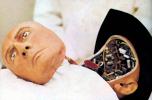
Westworld
1973 -

Child’s Play
1988 -
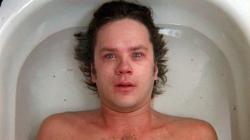
Jacob’s Ladder
1990 -

Willy Wonka and the Chocolate Factory
1971 -
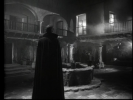
El Vampiro
1957 -
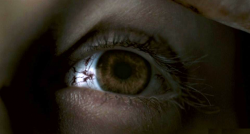
28 Weeks Later
2007 -

Piranha II: The Spawning
1981 -
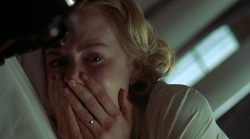
The Others
2001 -
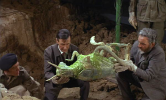
Quatermass and the Pit
1967 -

I Know Who Killed Me
2007 -
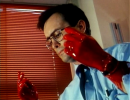
Bride of Re-Animator
1990 -

Alucarda
1978 -
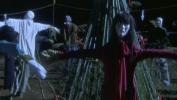
Kakashi
2001 -

Seizure
1974 -
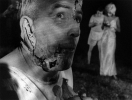
Night of the Living Dead
1968 -
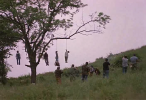
Night of the Living Dead
1990 -
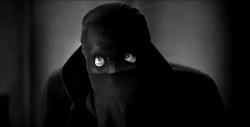
The Bat Whispers
1930 -
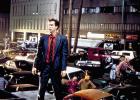
Miracle Mile
1988 -

Tintorera
1977 -

Paradise Lost
1996 -

The Cars that Ate Paris
1974 -

Ginger Snaps
2000 -
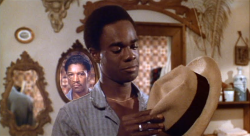
J.D.’s Revenge
1976 -
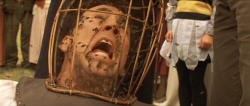
The Wicker Man
2006 -

Black Water
2007 -
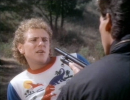
Don’t Panic
1988 -
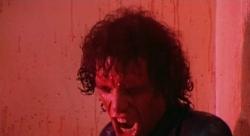
The Driller Killer
1979 -

Targets
1968 -

Mahal
1949 -
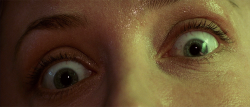
Event Horizon
1997
We don’t do comments anymore, but you may contact us here or find us on Twitter or Facebook.



